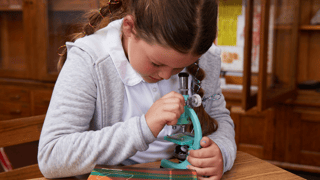The Ultimate Guide to School Uniform Skirts


Curious about everything, kids are natural scientists. Sometimes all they need is a problem to solve and a few supplies to take on the task. We pulled together some activities you can do with kids to celebrate National STEM Day.
National STEM Day is celebrated annually on November 8 – Nov 8, for innovate, get it? – and it’s a day to get kids excited about the sciences. It was started as a response to the nation’s need for more graduates in STEM. And if we want more people to get into STEM, then we need more kids to get interested in science and math early on.
Before we get to the activities, let’s start with the backstory — STEM is an acronym for science, technology, engineering and mathematics. More recently, it’s also called STEAM to include art and design. Whatever acronym you use, there’s never been a better time to get kids interested in these fields. STEM jobs are expected to boom across the US in the next decade. (Source: CNBC)
Oceanographers, dentists, transportation planners, engineers, statisticians, web developers, and psychologists are all examples of STEM jobs. And even beyond these fields, STEM nurtures critical thinking skills and problem solving skills that are helpful in any career they pursue.
So how do we prepare this next generation of innovators? By getting kids psyched about STEM/STEAM as early as possible. Here are a few fun activities you can do to spark kids' interest in STEM.

When kids play building games, there’s a lot going on underneath the surface. Each structure is its own little experiment that requires a good deal of creativity and problem solving. They’re not only working towards a goal, but learning about balance, weight and stability in the process.
What you’ll need:
Activity: Ask kids to build structures like buildings, bridges or geometric shapes. You could keep the challenge open-ended: build anything you want. Or you could be more specific by asking them to recreate a specific bridge, a building in your city or even your own house.

Left: binary letters for O-L-I-V-I-A Right: binary letters for J-O-S-H-U-A
Computers don’t read using the letters A-Z. They read using a special code called the binary alphabet, where each letter is a different string of numbers made up of 1s and 0s. This activity introduces kids to the fascinating world of coding, using a language they already speak: LEGO®.
What you’ll need:
Activity: Play around with the binary alphabet. Start by writing your kids name in a vertical line, and have them translate each letter to the binary alphabet. Then, bring in LEGO® bricks, colored blocks or MathLink® cubes. Assign a color for 1 and another color for 0. Then have kids write out short messages or phrases for you to decipher.

Help kids learn quick conversions while playing a fast-paced card game. The conversion you use is up to you: millimeters-to-centimeters or yards-to-feet are both good for quick mental math. If you’ve got a math whiz on your hands, or if you want to allow the use of paper and pencil, sub out for more difficult conversions.
What you’ll need:
Activity: Shuffle the deck, and place it face-down. Pick a conversion metric you want to practice for the entire game. One player flips the first card up and puts it on the table. Whoever can convert the card number first keeps the card and flips over the next card in the deck. Play till the deck runs out. Whoever has the most cards wins.
This activity is a fun, at-home science experiment. And even better: you get a toy at the end (toy design is a career in STEM, after all). For extra mystery, don’t tell kids the whole story and ask them what they think each material will be used for. Ask them to predict what will happen at the end of the experiment and why. Wild answers are always welcome.
What you’ll need:
Activity: Put the egg in a cup, and pour enough vinegar over it so that it’s completely submerged. Leave everything to sit for two days. After two days the shell will dissolve and the egg should be bouncy! The inside of the egg is still liquid, so be careful not to bounce too hard.

Clouds form when water vapor in the air turns into liquid water droplets – this is called condensation. It’s easier for condensation to occur when the water droplets have particles to grab onto such as dust and pollen. This fun activity mimics the creation of clouds using hairspray to facilitate condensation.
What you’ll need:
Activity: Pour hot water into the jar, and swirl it around so that the sides get warm. Turn the lid upside down so it’s like a tray, then put some ice cubes on it. Place all of this on top of the jar, and let everything sit for about 30 seconds. This next part you’ll want to do quickly: remove the lid, spritz some hairspray inside, then put the lid right back on top. Voilà, you just created a cloud. Learn more about how clouds form from NASA Climate Kids.
*Because hot water is involved, adult supervision is required.
National STEM Day is the perfect time to foster kids’ curiosity with a fun experiment. You could pick an activity off of this list, or – in the spirit of STEM – innovate with your own creation. Whatever you do, we wish you a happy STEM Day!